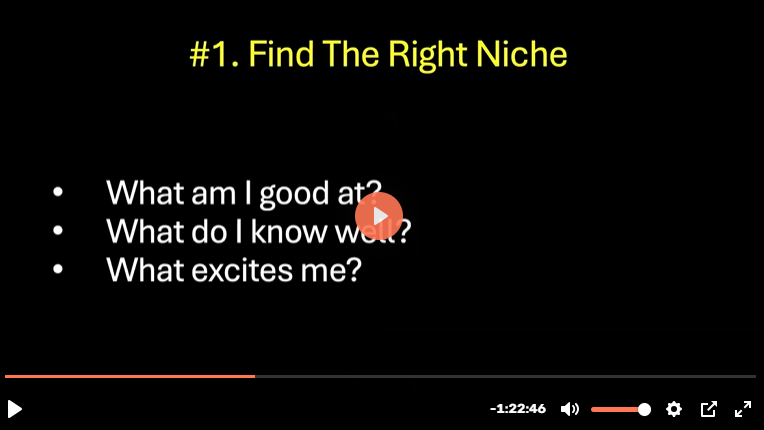Hey there, email maestro!
Got a list? Awesome! You’re already halfway to email greatness. But here’s the thing: having a list is like having a shiny new car. It’s great, but it won’t take you anywhere unless you know how to drive it. That’s where auto-responders come in – think of them as your personal chauffeur, driving your email marketing to success while you sit back and enjoy the ride.

What the Heck are Auto-Responders?
Imagine having a little email elf that works tirelessly, sending out perfectly timed messages to your list, all while you’re sipping piña coladas on the beach (or, you know, binge-watching your favorite show). That’s an auto-responder! It’s a sequence of emails that you set up once, and then – poof – they’re sent out automatically based on a schedule or specific triggers. Magic, right?
The Magic of Automation
Auto-responders are all about automation, and automation is your best friend in the world of email marketing. Why? Because it saves you time, ensures consistency, and helps you build relationships with your subscribers without lifting a finger (after the initial setup, of course).
Think about it: when someone signs up for your list, they’re at their peak interest level. They want to hear from you, and they want to hear from you now. An auto-responder ensures that they get a warm welcome, right away, followed by a steady stream of valuable content that keeps them engaged and excited about what you have to offer.
The Anatomy of an Auto-Responder
An auto-responder sequence can be as simple or as complex as you want it to be. Here’s a basic breakdown:
- Welcome Email: This is the first email your subscribers receive after signing up. It’s your chance to make a great first impression, set expectations, and maybe even offer a little gift (like a free download or discount code).
- Educational Emails: These emails provide value to your subscribers. They teach them something, solve a problem, or share a story. The goal is to build trust and establish yourself as an authority in your field.
- Promotional Emails: Once you’ve warmed up your subscribers with some valuable content, it’s time to make an offer. This could be a product, a service, or an affiliate promotion. Just make sure it’s relevant and valuable to your audience.
- Follow-Up Emails: After a promotion, it’s important to follow up. Thank your customers for their purchase, ask for feedback, or offer additional support. This shows that you care about their experience and helps to build a long-term relationship.
Setting Up Emails on Autopilot
Now, don’t let the techy name scare you. Setting up auto-responders is as easy as pie. Here’s a quick rundown:
- Choose Your Platform: Most email marketing services (like Mailchimp, ConvertKit, or ActiveCampaign) have auto-responder features. Pick your poison.
- Plan Your Sequence: Think about the journey you want to take your subscribers on. Welcome emails, educational content, promotional offers – the sky’s the limit!
- Craft Your Emails: Write those emails like you’re talking to a friend. Be yourself, be engaging, and don’t forget a clear call-to-action.
- Set the Timing: Decide when each email should go out. Day 1, Day 3, Day 7 – mix it up and keep ’em on their toes!
- Hit ‘Go’: Sit back and watch the magic happen. Your emails are now on autopilot, baby!

The Art of Writing Emails That Convert
Writing emails that convert is both an art and a science. Here are some tips to help you master the craft:
- Know Your Audience: Understand who you’re writing to. What are their pain points? Their desires? Their fears? The more you know about your audience, the better you can serve them.
- Be Personal: Write like you’re talking to a friend. Use their name, share personal stories, and be authentic. People buy from people they know, like, and trust.
- Provide Value: Every email should provide value to your subscriber. Whether it’s a tip, a story, or a special offer, make sure they’re getting something out of it.
- Have a Clear Call-to-Action: What do you want your subscriber to do after reading your email? Click a link? Reply to a question? Make a purchase? Make it clear and make it easy for them to do.
- Test, Test, Test: Don’t be afraid to experiment. Try different subject lines, different calls-to-action, different send times. See what works best for your audience and do more of that.
The Thrill of Seeing $$$ Roll In
Picture this: You wake up, stretch, and yawn (because you’re human, after all). You grab your phone and check your email. And there it is – notifications of sales, sign-ups, and engagement, all happening while you were catching some Zs. That’s the power of auto-responders, my friend. It’s like having a money-printing machine that works even when you’re not.
But it’s not just about the money (although that’s a nice perk). It’s about the impact you’re making. It’s about the lives you’re changing with your products, your services, your messages. It’s about the community you’re building, one email at a time.

Auto-Responders in Action: A Case Study
Let’s take a look at a real-life example of auto-responders in action. Meet Sarah, an online fitness coach.
Sarah has a list of about 5,000 subscribers. She uses auto-responders to welcome new subscribers, provide them with valuable fitness tips, and promote her online coaching programs.
Here’s what her auto-responder sequence looks like:
- Welcome Email: Sarah sends a welcome email as soon as someone signs up. She introduces herself, shares her story, and offers a free workout plan as a thank you for signing up.
- Educational Emails: Over the next few weeks, Sarah sends a series of emails with fitness tips, workout videos, and healthy recipes. She also shares success stories from her clients to build trust and credibility.
- Promotional Email: After providing a ton of value, Sarah sends an email promoting her online coaching program. She highlights the benefits, shares testimonials, and offers a special discount for her subscribers.
- Follow-Up Emails: After the promotion, Sarah sends a series of follow-up emails. She thanks her new clients for signing up, provides them with additional resources, and asks for feedback.
The result? Sarah’s auto-responder sequence converts about 5% of her new subscribers into paying clients. That’s 250 new clients from her list of 5,000 – all on autopilot!

Common Mistakes to Avoid
While auto-responders are a powerful tool, there are some common mistakes you’ll want to avoid:
- Being Too Salesy: Remember, the goal is to build a relationship with your subscribers. Don’t bombard them with sales pitches right off the bat. Provide value first, then make an offer.
- Not Segmenting Your List: Not all subscribers are created equal. They have different interests, different needs, different stages of the buyer’s journey. Segment your list and tailor your auto-responders to each group for better results.
- Ignoring Engagement: Pay attention to how your subscribers are engaging with your emails. If they’re not opening them, not clicking on your links, not taking action, it’s a sign that something’s not working. Don’t be afraid to tweak your sequence based on their behavior.
- Forgetting About Your Sequence: Once you set up your auto-responders, it’s easy to forget about them. But your business evolves, your audience evolves, and your auto-responders should too. Regularly review and update your sequence to keep it fresh and relevant.
Advanced Auto-Responder Techniques
Once you’ve mastered the basics, it’s time to take your auto-responders to the next level. Here are some advanced techniques to try:
- Behavioral Triggers: Instead of just sending emails based on time, send them based on behavior. For example, if a subscriber clicks on a specific link, send them a follow-up email with more information on that topic.
- Dynamic Content: Use dynamic content to personalize your emails even further. For example, if you know a subscriber’s location, you can include local information or offers.
- A/B Testing: Test different versions of your emails to see what works best. This could be different subject lines, different calls-to-action, different send times, etc. Use the data to optimize your sequence.
- Integration with Other Tools: Integrate your auto-responders with other tools in your tech stack. For example, you could integrate with your CRM to send personalized emails based on a subscriber’s purchase history.

The Future of Auto-Responders
The world of email marketing is always evolving, and auto-responders are no exception. Here are some trends to watch for in the future:
- AI and Machine Learning: AI and machine learning are already being used to optimize send times, subject lines, and even content. Expect to see more of this in the future.
- Interactive Emails: Interactive elements like quizzes, polls, and even embedded videos are becoming more common in emails. These can make your auto-responders more engaging and effective.
- Voice-Activated Emails: With the rise of smart speakers and voice assistants, voice-activated emails could be the next big thing. Imagine your subscribers being able to listen to your emails while they’re on the go.
- Hyper-Personalization: As data becomes more abundant and easier to analyze, expect to see a rise in hyper-personalized emails. These are emails that are tailored not just to the individual, but to their current situation, their mood, their needs at that exact moment.
Conclusion
Auto-responders are a powerful tool in any email marketer’s toolkit. They allow you to build relationships, provide value, and make sales – all on autopilot. But remember, they’re just a tool. The real magic comes from you – your voice, your message, your unique perspective.
So, are you ready to take your email list to the next level? To turn those subscribers into raving fans and paying customers? Then dive into the world of auto-responders. Your future self (and your bank account) will thank you.
Stay awesome,

P.S. If you’re feeling overwhelmed, remember: even the greatest email marketers started somewhere. You got this! 🚀

